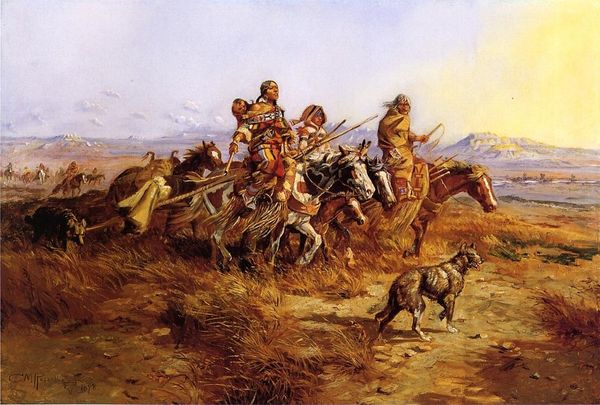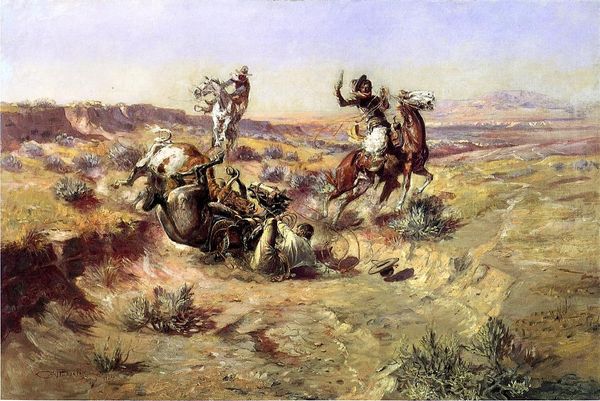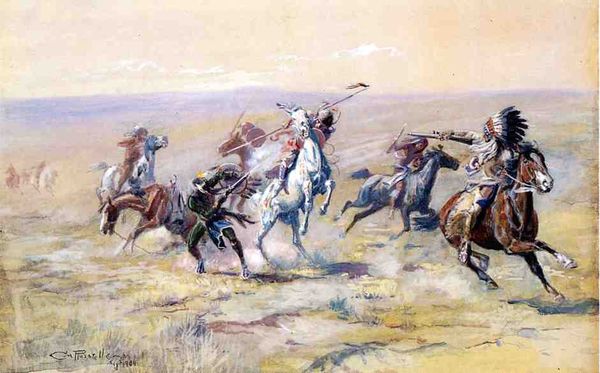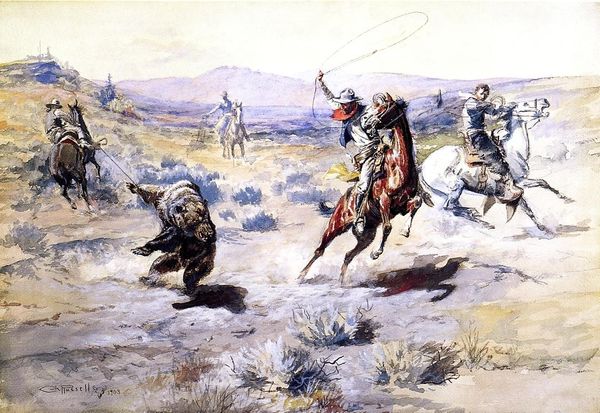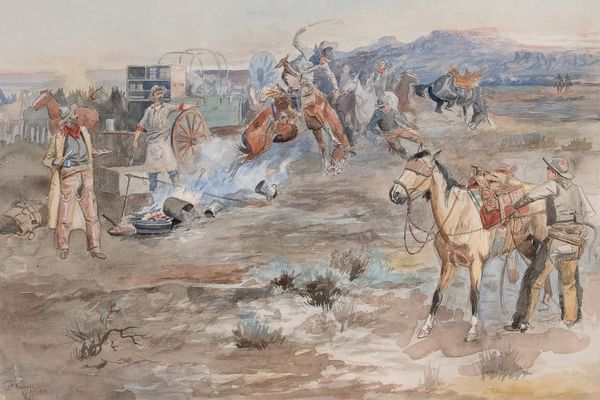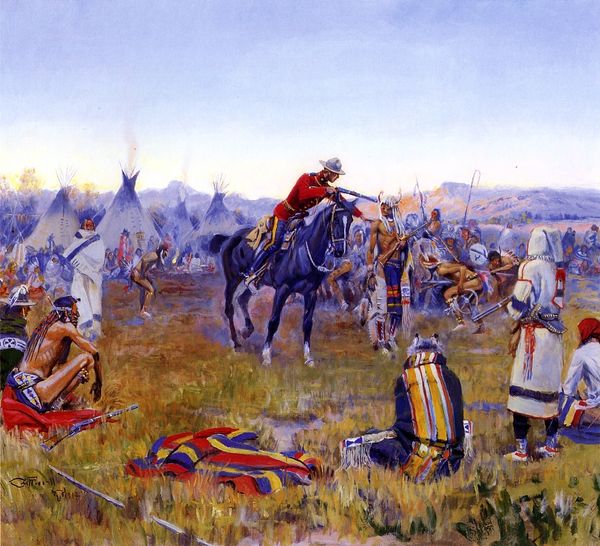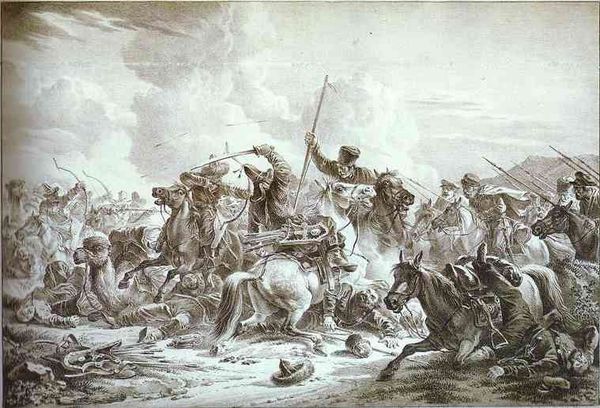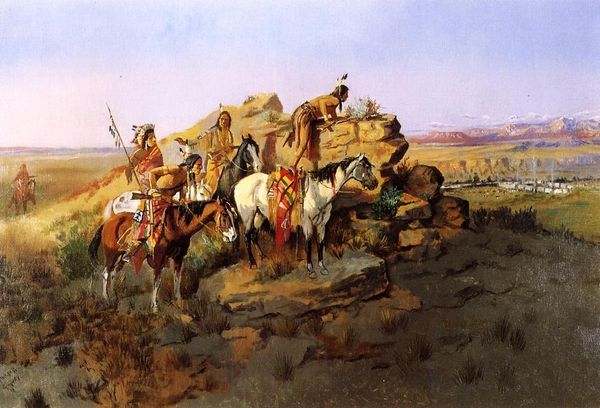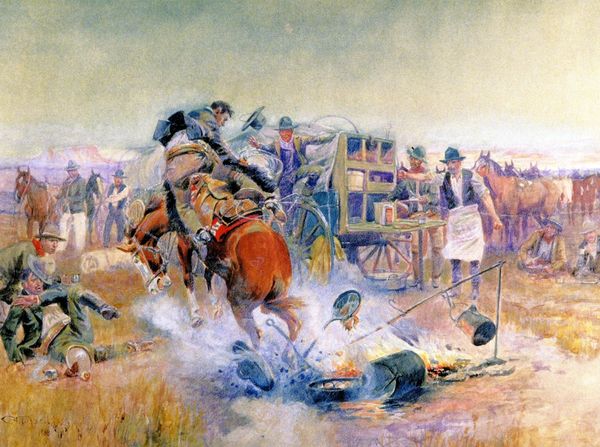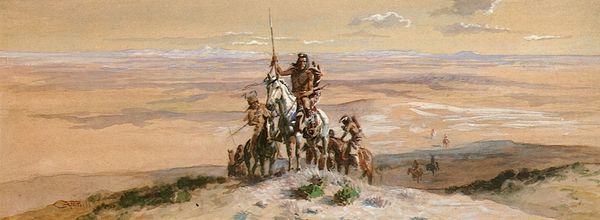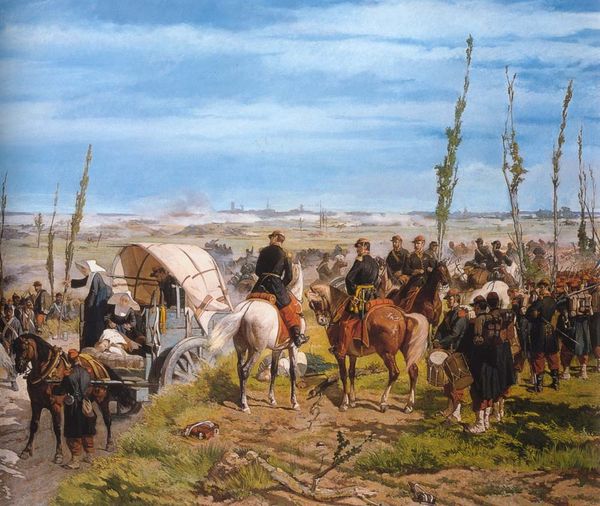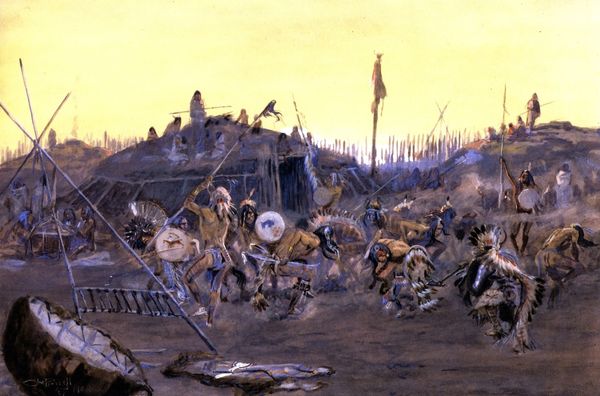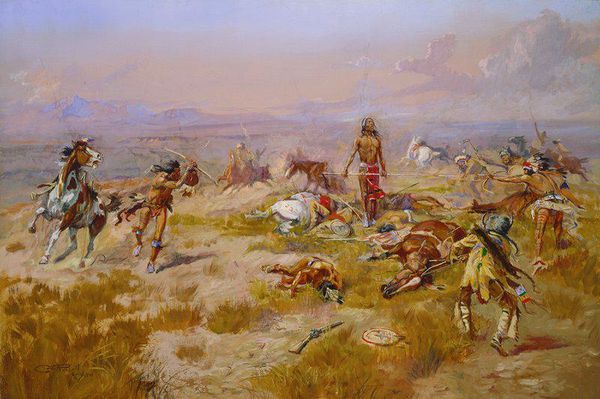
painting, plein-air, watercolor
#
painting
#
plein-air
#
landscape
#
oil painting
#
watercolor
#
genre-painting
#
watercolor
#
realism
Copyright: Public domain
Editor: Here we have "Rainy Morning" by Charles M. Russell. It looks to be watercolor and perhaps oil on canvas. The yellow slickers worn by the cowboys really pop against the muted colors of the rainy landscape. How do you read the formal qualities of this painting? Curator: Observe how the composition uses a limited palette. Predominantly muted blues and browns are punctuated by that insistent yellow. Note also the spatial organization: The artist leads the eye from the foreground, cluttered with discarded gear, into a middle ground teeming with activity and a background that fades into the overcast sky. Consider, too, the textural contrast between the loose, watery washes in the sky and the more deliberate brushstrokes used to render the figures. Do you notice how this tension creates a visual dynamism? Editor: I see that, especially in the juxtaposition between the blurred background figures and the more sharply defined ones in the center. What does that tension do for the work, beyond simply catching the eye? Curator: The composition generates a structured asymmetry. By placing the brightest yellows off-center, Russell disrupts any sense of static balance, mirroring the disrupted routines implied by the rain itself. Think about the dynamic diagonals created by the figures and the placement of horses leading toward the middle, contrasting to a single horse on the right pulling the viewer’s eye off-canvas. Does this contribute to the narrative’s impact? Editor: It does, making me feel as though I'm looking at an event still unfolding. The more defined lines draw attention to the figures' purpose in the chaotic scene, too. I see what you mean about the composition underscoring the moment’s disruption and emphasizing movement. Curator: Precisely. Through an analysis of form and composition, we uncover the strategies an artist uses to guide our vision and evoke meaning beyond the representational. The aesthetic structure speaks! Editor: This lens has been truly illuminating. I learned much from analyzing color contrasts, textures, and asymmetrical balances. Thanks.
Comments
No comments
Be the first to comment and join the conversation on the ultimate creative platform.
